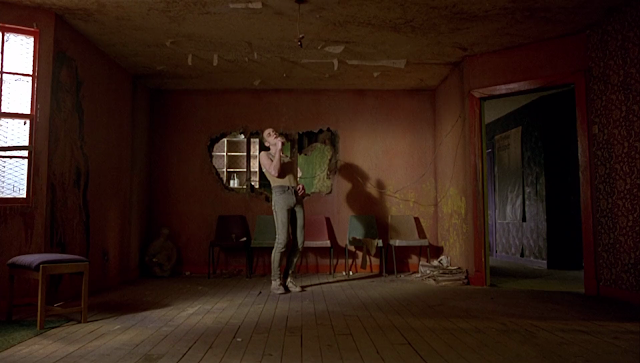Introduction to Trainspotting
Trainspotting is part of a two-film study in Section C: British Film since 1995 on the first exam paper Component 1: Varieties of Film and Filmmaking.
You need to write about Trainspotting alongside This is England, though there is NOT a requirement for you to compare both films. Instead, you should focus half of your essay on this film and the other half of your essay on This is England.
In the exam you will answer one question from a choice of two. You should spend 50 minutes on your essay - roughly 25 minutes on Trainspotting and 25 minutes on This is England. The questions could be on one of the Core Areas of Study such as an aspect of film form (focusing on any of cinematography, mise-en-scene, editing, sound or performance), representation (of gender, ethnicity, age or social class), aesthetics (the overall style and feel of the films), or contexts (social, cultural, political, institutional, economic or technological).
Alternatively, questions could be on the Specialist Study Areas for Section C: British Film since 1995 - testing your understanding of critical approaches to ideology (the beliefs and values the films reflect) or narrative (the way story information is constructed).
Clearly, then, there is a great deal to cover and regardless of the question you must make explicit references to key scenes from both Trainspotting and This is England to support your points.
Trainspotting is arguably the defining British film of the 1990s. Many of its cast and crew have now become household names - not least the film's director Danny Boyle (who won an Oscar for Slumdog Millionaire and has directed a number of high profile movies including Sunshine, 127 Hours and Steve Jobs) and Ewan McGregor (who played the film's narrator and central protagonist, Mark Renton, and has subsequently starred in Hollywood blockbusters including Angels and Demons, The Island and Star Wars: Episode I - The Phantom Menace).
The film spawned a sequel, T2 Trainspotting, which was released in 2017, and a huge range of youth-oriented merchandise including a bestselling album of music from the film (featuring tracks from Iggy Pop, New Order, Pulp and Leftfield), clothing and an up-turn in sales of the cult source novel by Scottish writer Irvine Welsh (author of Marabou Stork Nightmare, Filth and Porno - which was the basis for the film sequel).
The perception of the film, both when it was made and today, was one that oozed 'cool' - something that was reflected in the marketing of the film which incorporated iconic medium and medium long shots of the main characters. Trainspotting has cinematic charisma, wit, was a cult phenomenon and captured the zeitgeist of the 1990s (reflecting the spirit and mood, the ideas and beliefs, of that particular period of history). The film was also seen as heralding a new wave of UK cinema.
The film was controversial; partly as a result of Boyle's cinematic style which blended gritty urban realism with surrealistic moments (combining stunning cinematography and energetic editing) but mostly as its subject matter is, at least on the surface, about heroin addiction in a working-class community in Edinburgh. This was seen by many as a controversial representation of Scotland because of its perceived glamorisation of a drug fuelled lifestyle.
Not only was Trainspotting an era-defining film, it was one of the most commercially successful UK films of the 1990s (taking a worldwide gross of $71,558,971 from a budget of $3,500,000 - over 20 times its budget). Despite many of Boyle's other films surpassing its financial success at the box-office it also remains the director's defining movie.











Comments
Post a Comment